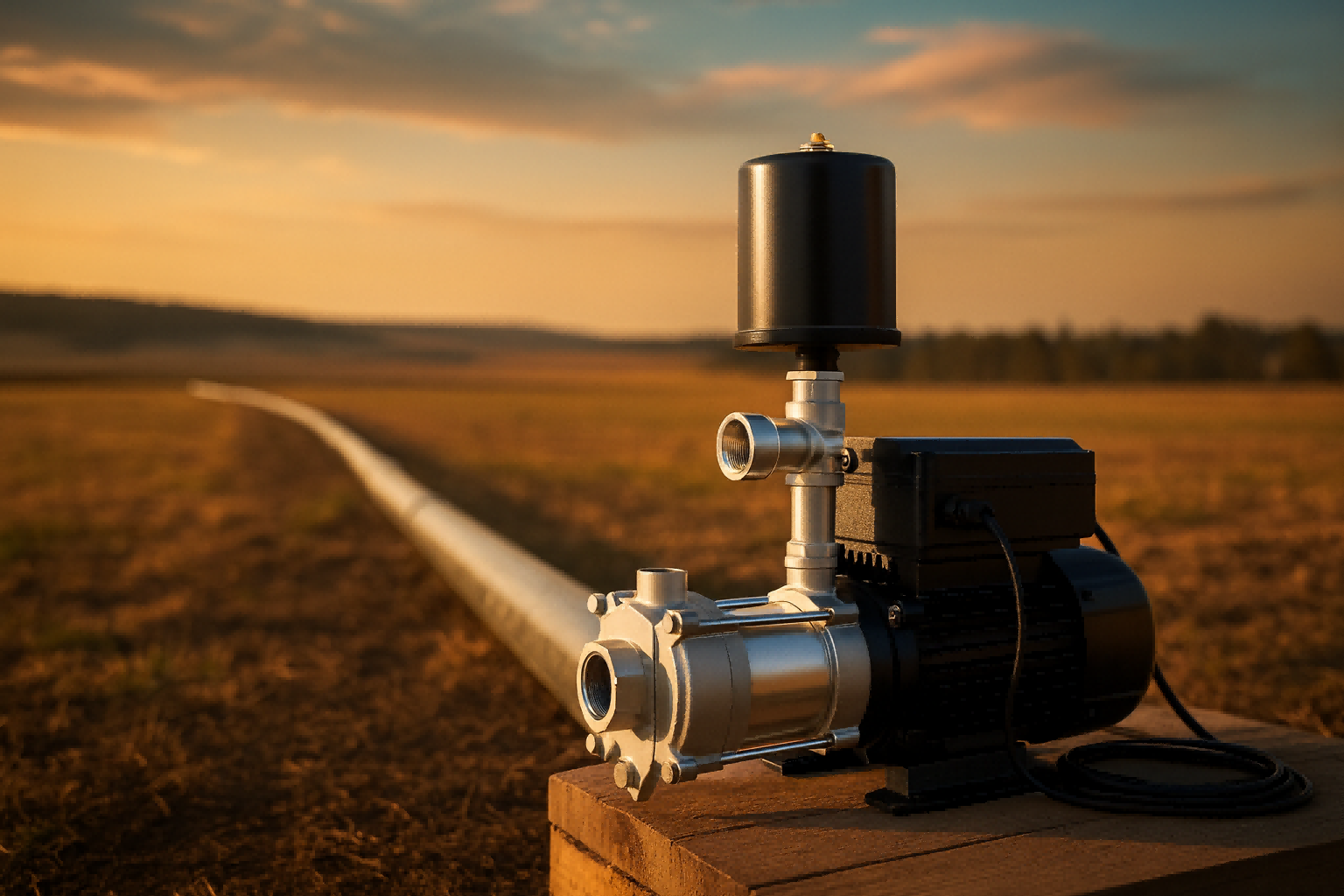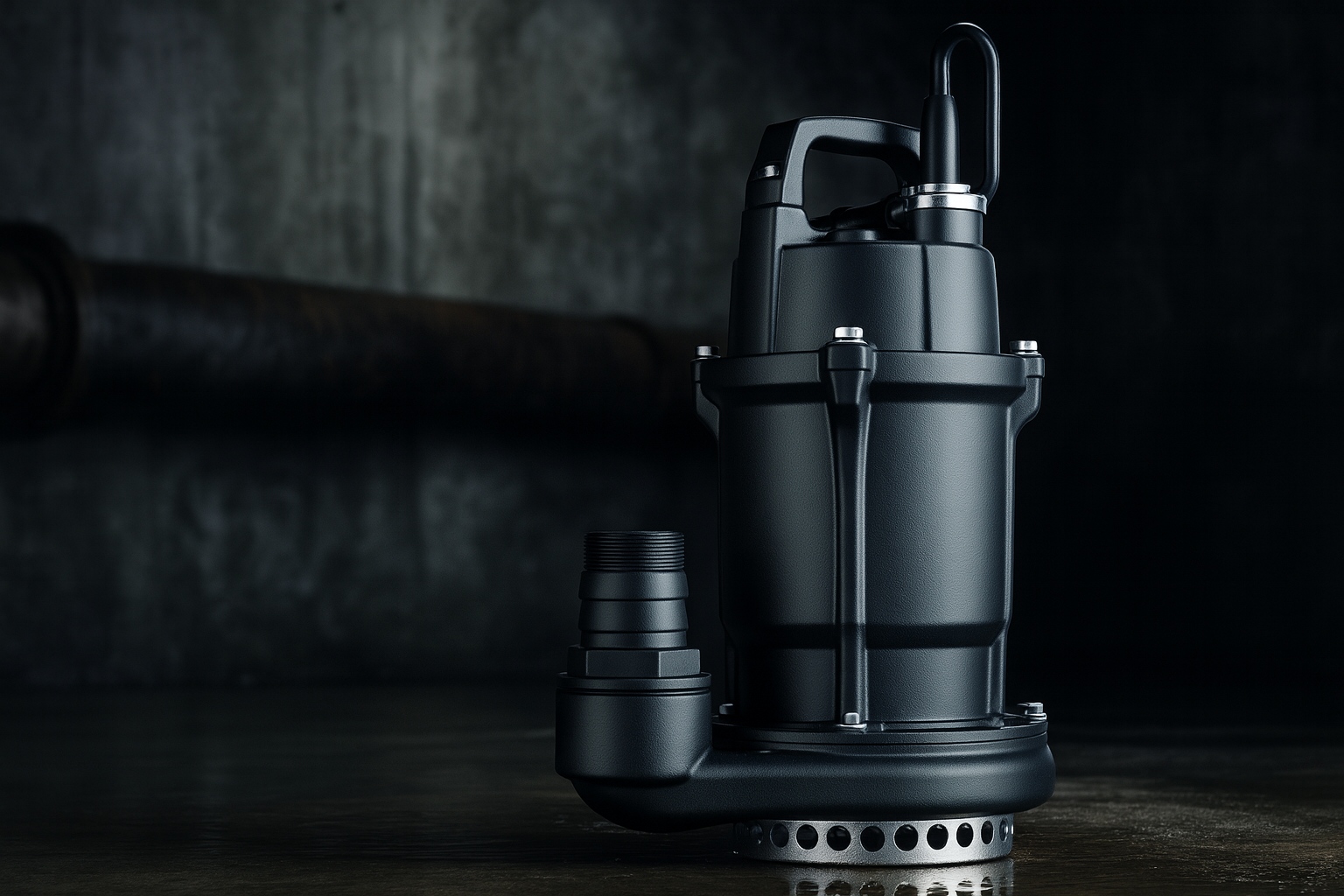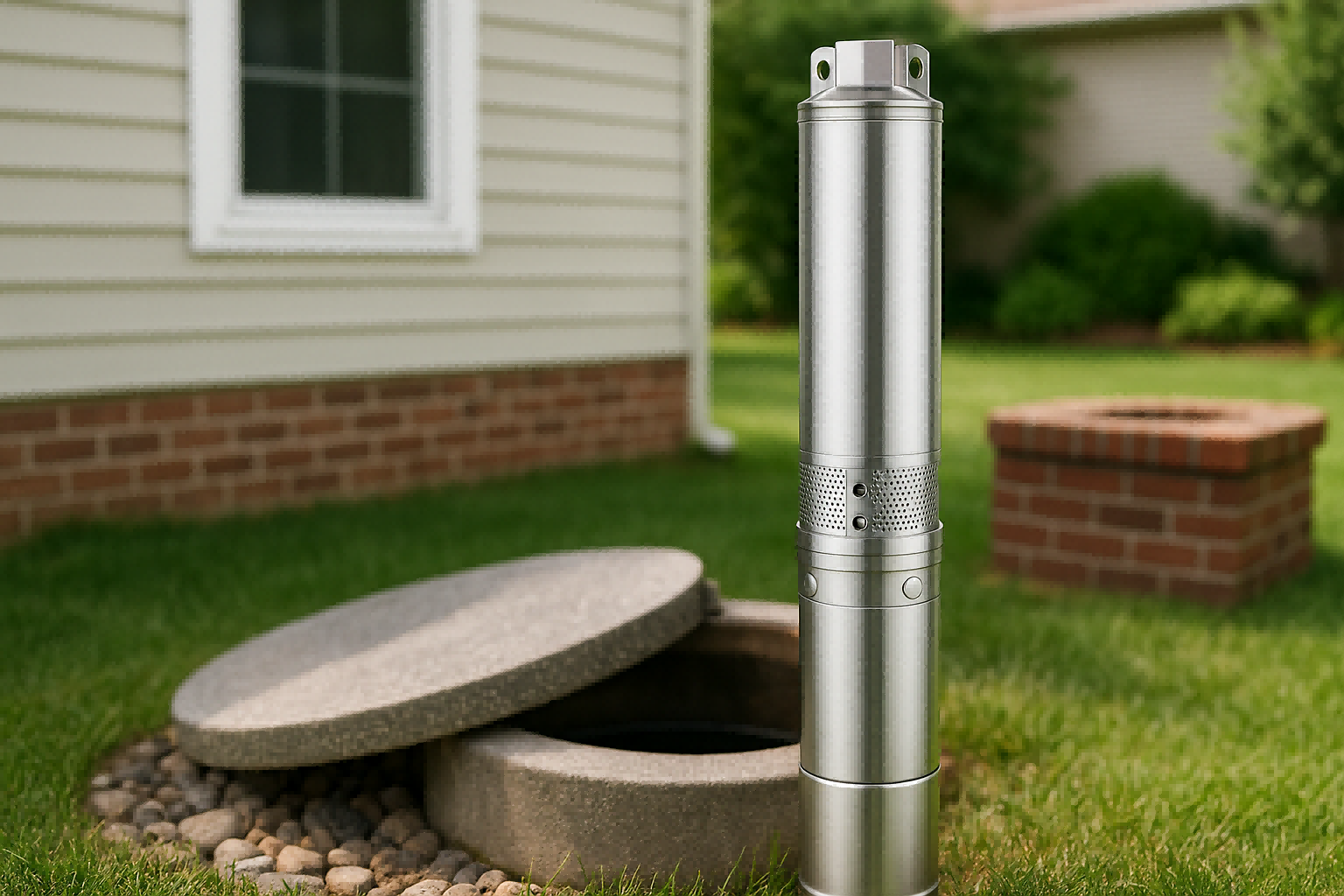Struggling to get water where you need it?
A powerful pump seems like the answer, but distance can be a real problem.
A 2 HP pump can typically push water over a horizontal distance of about 700 metres, or 2300 feet.
However, this is just a rough estimate.
The actual distance depends heavily on factors like vertical lift, pipe size, and terrain, which all affect the final pressure.

Understanding your pump's real-world capabilities is about more than just horsepower.
It's about ensuring you have a reliable water supply right where you need it.
Whether you're moving water for irrigation, supplying a home from a well, or managing water on your property, knowing your pump's limits saves you time and money.
The journey to effective water transport starts with understanding the forces your pump must overcome.
Let's dive into the core principles that determine just how far your pump can truly push water.
Understanding Head Pressure and Pump Performance
Are you confused by terms like "head pressure"?
You're not alone.
Many people find it hard to understand how this affects their pump's performance.
Head pressure is the total resistance your pump must work against to move water.
This includes both vertical lift and horizontal distance.
A pump rated for 100 feet of head can lift water 100 feet straight up or push it about 1,000 feet horizontally on flat ground.
To truly grasp your system's needs, we need to look closer at what makes up this resistance.
It's not just about one number.
It's a combination of different factors that all add up.
Calculating this total resistance, known as Total Dynamic Head (TDH), is the key to selecting the perfect pump for your job.
Let's break down the components of TDH to see how they impact your pump's ability to deliver water over a distance.
Vertical Head vs. Horizontal Distance
The relationship between lifting water up and pushing it across is a fundamental concept in pump sizing.
It’s all about energy.
Lifting water vertically requires significantly more energy than pushing it horizontally.
A common rule of thumb is that every one foot of vertical lift is equivalent to about ten feet of horizontal distance on a level surface.
This ratio helps you make quick estimates about your system's demands.
For example, if your pump needs to lift water 30 feet into a storage tank, that effort is roughly the same as pushing water 300 feet across a flat field.
This is a simplified view, but it highlights the importance of elevation changes.
Calculating Total Dynamic Head (TDH)
Total Dynamic Head, or TDH, is the most accurate measure of the total work your pump needs to do.
It’s the sum of all the pressures the pump must overcome.
Calculating TDH is critical for choosing a pump that won’t be underpowered or wastefully oversized.
Here's a breakdown of what goes into the TDH calculation:
| Component | Description | Impact on Pump |
|---|---|---|
| Static Head | The total vertical distance (in feet) from the surface of the water source to the highest point of delivery. | This is the primary lifting requirement. A higher static head demands a more powerful pump. |
| Friction Losses | The resistance created by water moving through pipes, fittings, valves, and elbows. | Friction increases with pipe length, higher flow rates, and smaller pipe diameters. It adds to the total head. |
| Pressure Requirements | The pressure needed at the final outlet (e.g., 40 PSI for a sprinkler system). | This is converted to feet of head (1 PSI ≈ 2.31 feet of head) and added to the TDH. |
Understanding these three components allows you to build a complete picture of your system's requirements.
A pump curve, provided by the manufacturer, shows a pump's performance at different TDH values.
You can then match your calculated TDH to the pump curve to find a model that delivers your desired flow rate efficiently.
Modern intelligent pumps often use advanced motors and controllers to manage these pressures dynamically.
A high-efficiency Permanent Magnet Synchronous Motor (PMSM) paired with a Variable Frequency Drive (VFD) can automatically adjust its speed.
This maintains a constant output pressure even as conditions change, ensuring optimal performance and energy efficiency.
How Far Can a Submersible Pump Push Water?
Are you wondering about the limits of a submersible pump?
It's a common question for anyone with a well, sump pit, or irrigation system.
The distance a submersible pump can push water varies greatly.
It depends on the pump's horsepower, the required head pressure, the pipe diameter, and any changes in elevation.
Most residential submersible pumps can push water between 100 to 400 feet horizontally, while their vertical lift is typically 50 to 200 feet, based on the model.
The specifications on the box are just a starting point.
To get a reliable and efficient system, you need to understand the details that influence performance in the real world.
Let's explore key factors like pipe size, horsepower, and terrain.
These elements work together to define the true reach of your submersible pump and ensure you get water exactly where you need it.
Factors That Affect Pumping Distance
Several critical factors determine the effective pumping distance of any system.
Ignoring these can lead to poor performance, low pressure, and even damage to your pump.
Understanding how each element contributes to resistance is key to designing an efficient system.
Pipe Size and Material is one of the most significant factors.
The diameter of your pipes directly affects friction loss.
Water flowing through a narrow pipe faces more resistance than water in a wider pipe.
For example, a 1-inch pipe creates much more friction than a 2-inch pipe over the same distance, forcing the pump to work harder.
The material of the pipe also matters.
Smooth materials like PVC have less friction than rougher materials like older galvanized steel.
Pump Horsepower and Flow Rate are in a constant trade-off.
A higher horsepower pump can generate more pressure to push water farther.
However, this is always balanced against the flow rate, measured in gallons per minute (GPM).
A 1 HP pump might push 10 GPM over a distance of 300 feet.
But if you need 20 GPM, that same pump might only push the water 200 feet.
You must decide what is more important for your application: distance or volume.
Elevation Changes and Terrain have a dramatic impact.
Pumping water uphill requires a massive amount of energy.
As we discussed, every foot of elevation gain consumes the energy needed to push water about ten feet horizontally.
A pump that can easily move water 1,000 feet across a flat field might struggle to push it 500 feet if the path includes a 50-foot hill.
Conversely, a downhill slope can help your pump, but pressure must be managed to avoid damaging pipes or fixtures.
Sophisticated modern pumps often integrate advanced electronics to handle these variables.
For instance, a system with a built-in Variable Frequency Drive (VFD) constantly monitors pressure.
It can adjust the motor speed in real-time to compensate for friction losses or changes in elevation, ensuring a stable and consistent water supply at the destination.
Typical Performance Ranges by Pump Size
Pumps are not one-size-fits-all.
Their performance is directly tied to their horsepower (HP).
Understanding the typical ranges for different pump sizes helps you narrow down your choices and select a unit that aligns with your needs.
These figures are general estimates for pumps pushing water on level ground, so always check the specific manufacturer's pump curve for precise data.
1/3 HP Submersible Pumps
These smaller pumps are ideal for light-duty tasks.
They are often used in shallow wells or for simple water transfer applications where high pressure and long distances are not required.
- Vertical Lift: Typically 40-80 feet.
- Horizontal Distance: Around 400-800 feet.
- Flow Rates: Generally 5-15 gallons per minute.
1/2 to 3/4 HP Submersible Pumps
This mid-range is the sweet spot for many residential applications.
These pumps offer a good balance of power, flow, and pressure for supplying water to a home from a moderately deep well or for small-scale irrigation.
- Vertical Lift: Approximately 80-120 feet.
- Horizontal Distance: Between 800-1,200 feet.
- Flow Rates: Usually 10-25 gallons per minute.
1 HP and Higher Submersible Pumps
For deep wells, large properties, or demanding applications like multi-zone irrigation, heavy-duty pumps are necessary.
These units are built to overcome significant head pressure and deliver high volumes of water over long distances.
| Pump Power | Typical Vertical Lift | Typical Horizontal Distance | Common Flow Rates |
|---|---|---|---|
| 1 HP | 100-150 feet | 1,000-1,500 feet | 15-35 GPM |
| 1.5 HP | 120-180 feet | 1,200-1,800 feet | 20-45 GPM |
| 2 HP | 150-200+ feet | 1,500-2,300+ feet | 25-50+ GPM |
Today's premium pumps enhance these capabilities with smart technology.
For example, a high-quality 1 HP pump might use a highly efficient permanent magnet motor that can achieve speeds up to 5,200 RPM.
This allows it to deliver performance comparable to a traditional 1.5 HP pump but with lower energy consumption.
When combined with a VFD controller, the pump can maintain constant pressure across its entire operational range, delivering water efficiently whether the demand is high or low.
Optimizing Your Submersible Pump System
Is your pump system underperforming?
Simply buying a powerful pump isn't enough to guarantee great results.
Proper system design and regular maintenance are essential for optimal performance.
An oversized pump can cycle on and off too frequently, which wastes energy and shortens the pump's lifespan.
Work with the manufacturer's pump curves to perfectly match your head and flow requirements.
This ensures you get the performance you need without paying for power you don't use.
Thinking about the entire system, not just the pump, is the key to long-term success.
From the pipes to the pressure tank, every component plays a role.
Let's explore how smart design choices and routine upkeep can help you maximize your pump's range and efficiency, ensuring a reliable water supply for years to come.
Smart Design & Premium Features
A well-designed water pump system is more than just a motor and pipes.
It's an integrated solution where every component works together to enhance performance, reliability, and longevity.
Today’s most advanced systems incorporate intelligent features and robust materials to deliver superior results.
Core Drive Technology
The heart of a modern high-performance pump is its drive system.
The best systems pair a high-efficiency Permanent Magnet Synchronous Motor (PMSM) with a Variable Frequency Drive (VFD) controller.
This combination delivers several key benefits:
- Constant Pressure: The VFD adjusts the motor speed in real-time to maintain perfectly stable water pressure, regardless of demand.
- Quiet Operation: The advanced motor design significantly reduces noise, with top-tier models operating at or below 50dB—quieter than a library.
- Soft Start/Stop: This function gradually ramps the motor up and down, reducing mechanical stress and preventing water hammer, which can damage your plumbing.
Uncompromising Reliability
Durability is built from the inside out.
Look for pumps constructed with high-grade components designed to withstand harsh conditions.
| Component | Feature | Benefit |
|---|---|---|
| Electronics | Fully potted PCB (IP67 rating) | Creates a 100% waterproof and dustproof seal, protecting sensitive electronics from moisture and extending controller life by years. |
| Hydraulics | AISI304 Stainless Steel Impeller | Offers excellent corrosion resistance and durability for a long service life. |
| Housing | UV-resistant ABS material | Prevents the pump casing from becoming brittle and cracking when exposed to sunlight. |
| Bearings | High-precision bearings | Provide quieter operation, higher efficiency, and a significantly longer lifespan compared to standard bearings. |
Furthermore, a comprehensive suite of electronic protections is crucial.
Advanced systems monitor for issues like dry running, overheating, voltage fluctuations, and phase loss, automatically shutting down the pump to prevent catastrophic failure.
System-Level Enhancements
Thinking beyond the pump itself can dramatically improve the user experience.
A small pressure tank (e.g., 1.5L - 5L) installed in the system reduces pump cycling by as much as 70%, saving energy and wear.
Optional WiFi connectivity allows for remote monitoring and control via a smartphone app, giving you real-time data on power consumption, pressure, and system status.
For larger applications, a twin pump link mode allows two pumps to work together intelligently, alternating operation to share the load and providing a built-in backup if one unit fails.
These features transform a simple pump into a smart, self-protecting water management system.
Conclusion
The distance a 2 HP pump can push water depends on TDH, pipe size, and terrain, not just horsepower.
Modern VFD pumps optimize performance and efficiency to maximize this distance reliably.
FAQs
How far can a 1 hp water pump push water horizontally?
A 1 HP pump can typically push water between 1,000 to 1,500 feet horizontally on level ground.
This distance decreases significantly with any vertical lift or smaller pipe diameters.
How do you calculate how far a pump can push water?
You calculate the Total Dynamic Head (TDH), which includes vertical lift, pipe friction, and required outlet pressure.
Then, you check a pump's performance curve to see the flow rate at that TDH.
How many feet can a pump push water uphill?
This is the pump's "head rating."
A pump rated for 150 feet of head can push water 150 feet straight up, assuming zero friction loss from pipes.
What size pump do I need to push water 1000 feet?
For 1,000 feet on flat ground, a 1/2 to 3/4 HP pump may work for low flow.
For higher flow or any elevation gain, a 1 HP or larger pump is recommended.
Does pipe size affect water pressure?
Yes, dramatically.
A smaller pipe creates more friction, which reduces pressure and flow over distance.
Using a larger diameter pipe significantly improves performance.
How far can a pump pull water vertically?
Most surface pumps can only pull water from a maximum vertical depth of about 25 feet due to atmospheric pressure limits.
Submersible pumps push water up from below and are not limited this way.
How do I increase the distance my pump can push water?
Use a larger diameter pipe to reduce friction loss.
Ensure there are no leaks in the system and minimize sharp bends. Ultimately, you may need a pump with a higher head rating.
Can a pump be too powerful?
Yes.
An oversized pump will cycle on and off frequently, wasting energy and causing premature wear on the motor and components.
It's crucial to match the pump to your system's actual needs.








